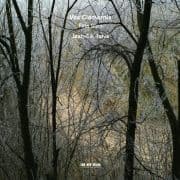La Grande Bellezza – with overtones to the Academy Award | Vox Clamantis
Die Musik zum Film “La Grande Bellezza” (Die große Schönheit, 2013) von Paolo Sorrentino bedient sich u. a. der Obertongesang-Interpretation von Pérotins “Beata viscera” des estnischen a cappella Ensembles Vox Clamantis. Beata viscera ist auf der CD Filia Sion enthalten.
Beata viscera ist ein Werk des französischen Komponisten Pérotin aus dem 12. Jh und gehört zur frühesten Mehrstimmigkeit in Europa.
Obertongesang verleiht der Komposition eine mystische Stimmung. Natürlich ist Obertongesang nicht Bestandteil der Originalkomposition von Perotin, sondern wurde von Vox Clamantis hinzugefügt. Mir gefällt diese Modifikation sehr, besonders deshalb, weil die Obertöne kontrolliert und musikalisch integriert werden. Sie bilden eine eigenständige Melodie und sind vermutlich nicht, wie weit verbreitet, Zufallsprodukte, sondern ganz gezielt gesungen. Obwohl manchmal die Dur-Terz der Obertonreihe mit der Moll-Terz der dorischen Melodie in Konflikt steht. Ich bringe meinen Masterclass-Studenten bei, diese Konflikte gezielt zu umgehen, es sei denn, sie wären ausdrücklich erwünscht.
Beata viscera hatte übrigens früher schon einmal das Hilliard Ensemble zu einer Neuinterpretation mit dem Saxophonisten Jan Garbarek angeregt (auf der CD Officium).
Bildnachweis: Beata Viscera von Perotin (Wolfenbüttel Digital Library) [Public domain], via Wikimedia Commons.




Recent Comment